We are just ending our After Burner week with this new entry to our Round Table series where people on staff talk about a specific topic. This week we will be talking about our fond and not-so-fond memories with the After Burner franchise. Like always, if you guys want to tell us about your beloved memories with this AM2 gem, we would love to here them in the comment section below. Fire!
Barry the Nomad
The After Burner franchise is, without a doubt, quintessential SEGA. Arcade roots, fast paced gameplay, awesome machinery coupled with beautiful settings, and of course blue skies. That isn’t to say that After Burner is incredibly unique. The concept itself is simplistic, with a jet fighter flying from a third person perspective, shooting down enemies. If you didn’t know I was talking about After Burner, I might as well have been describing a dozen video games from the 80’s and 90’s. Not to mention that SEGA’s own Out Run and Space Harrier predate After Burner and both are similar in play style, especially when comparing Space Harrier and After Burner. But that just shows how strong of a game After Burner is. While the game has an unoriginal setting and many similarities to other Sega AM2 games, After Burner is the perfect arcade game.
“I was always aware of After Burner as that cool jet fighter game that I couldn’t get more than 2 minutes into before dying…”
Despite my gushing over the game, my history with the franchise is hazy. I feel as though I was always aware of After Burner as that cool jet fighter game that I couldn’t get more than 2 minutes into before dying, but then again I was only 6 years old. The first time I owned a copy of the game was thanks to Shenmue II, which featured it as a playable arcade game. Playing as Ryo, the Phoenix Building was the place to be, and I blew all the cash I had earned on that game, even to the point of getting the bad ending. Sorry Ryo, but classic SEGA arcade games are more important than getting stuck in a cave.
Nuckles87
[Above art by Daniel Vendrell Oduber]
My first time playing anything related to After Burner was actually through one of its sequels, G-LOC. I received the game with my Nomad back in 2000 and played it endlessly. Back in the day I was really into flight sims, and G-LOC was the closest thing I had to one outside of the PC at the time. The game’s difficulty frustrated me to no end at the time, but the way the game rendered a first person flight game on my little Nomad blew me away at the time.
“When I went to the arcade and saw they had a full motion After Burner Climax cabinet, I knew I had to play it…”
I wouldn’t play a genuine After Burner game until I got After Burner Complete for my 32X several years later. The game did not leave much of an initial impression on me. I played it for a few minutes…died…then played something else. Many years later I would gain an appreciation for the game and finally beat it for review (which you can read here) for this week’s festivities. It wouldn’t be until 2008, in a GameWorks in Sawgrass Mills, Florida that I finally got to see what After Burner was really all about. When I went to the arcade and saw they had a full motion After Burner Climax cabinet, I knew I had to play it…and lo and behold, the experience was incredible. By 2008 I had already cultivated a love for rail shooters, but Climax was something else. It was fast, exciting and unlike any other game I had played at the time. To this day it remains one of my favorite arcade games and the only SEGA full motion cabinet I’ve actually had the opportunity to play.
The After Burner games are the very definition of blue skies SEGA. They are loud, cheerful and colorful and contain some of the most iconic tunes in the company’s history. How can they be considered anything but iconic SEGA games? The original After Burner II and its successor, Climax, are must play games for any SEGA fan. Even if you aren’t a big fan of this style of game, you owe it to yourself to play one of these games at least once if you ever come across a full motion cabinet. Please don’t deny yourself.
George
After Burner has always been one of those games that just came out in a weird time in my life. When have you seen a super young kid being into a game with a jet on the cover? Very rarely. I was one of those kids that liked Sonic the Hedgehog, Bubsy and any other game with a nice looking mascot. Did I notice After Burner? Possibly, but considering that around the time it came out I never really went to arcades and probably wouldn’t pick After Burner for my Genesis if given the choice. So when was the first time I played the game?
“After Burner is everything you love about SEGA, super fast arcade gameplay and beautiful blue skies.”
Actually it was possibly probably 1998, right when a arcade opened in my small town. The guy got the usual popular games at the time like Marvel vs Capcom, the multiple Neo Geo arcade cabinet and sitting in a dusty corner After Burner. Yes, the infamous ‘sit-down cabinet’ that was featured in Terminator 2. When I saw it, I totally stopped caring about the other fighting games in the room and was drawn. Did I love the game? No, it cost me too many quarters and I just kept dying. But it made me appreciate the game that I never would have tried otherwise. After that day I hunted down the game on the SEGA Genesis. After Burner is everything you love about SEGA, super fast arcade gameplay and beautiful blue skies. Other on rail shooters wish they where as fast paced and adrenaline-inducing just like AM2’s arcade games.
Ad:
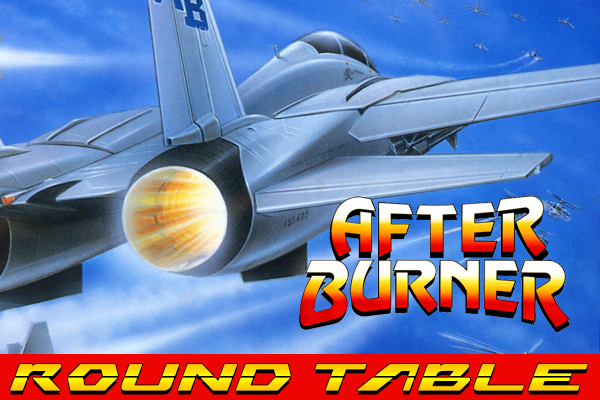
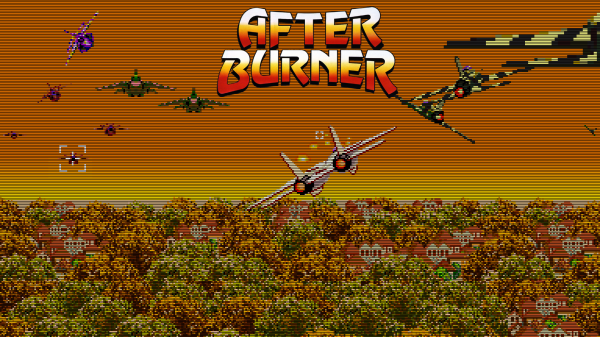
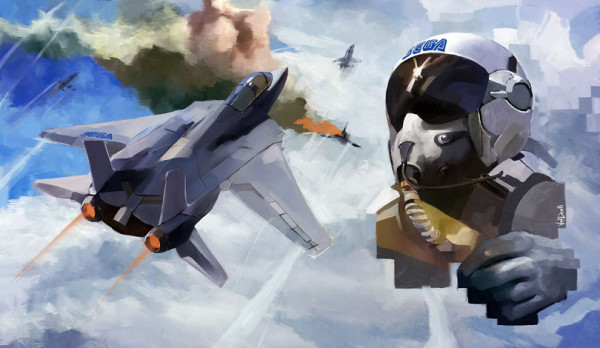
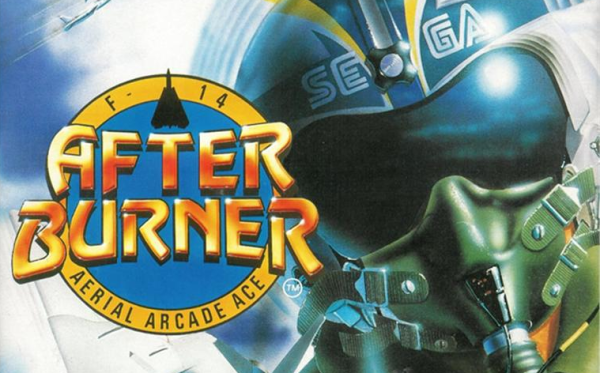
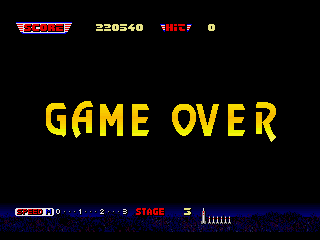


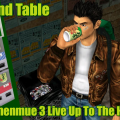
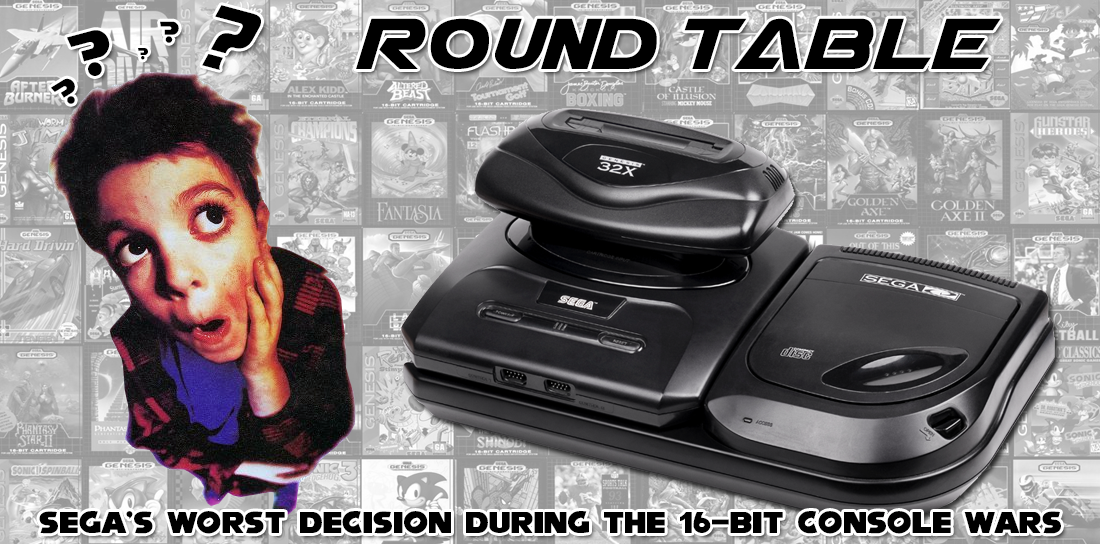
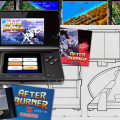
I was about 13 when After Burner (II) came out in the arcades. I had been playing video games since about the age of 7, beginning with the Atari 2600 and then spending several years with the Apple IIe. By the time After Burner came out, home video games had already undergone a tremendous forward leap in audiovisual quality and the 8-bit console generation was well under way. And arcade games were already far outpacing what was possible on home platforms.
Yet even with this extra horsepower in the machines at the arcades, what Sega was doing at this time with their superscaler games was, frankly, shocking. Like the iconic red car in Out Run, Sega’s AM2 division was moving so fast that it made every other developer look like they were standing still. The intensity, fluidity and dynamic beauty of After Burner was awe-inspiring and thrilling. The context that this game arrived within was one dominated by top-down shooters and platformers. It seemed to be something from the future.
As kids who were really into the show Robotech, my best friend and I were particularly thrilled with the amazing smoke trails generated by your plane’s missiles, which were reminiscent of the elaborate battle sequences in that show. The smoke trails contributed to the incredible sense of speed and also provided some element of risk and reward in the sense that they were both your most powerful weapon and something that obscured your vision momentarily. They were also something that conveyed an attention to detail and (stylized) realism that was previously unseen in any shooters. (Yes, back in the day, games that are now called ‘shmups’ were called shooters.)
The deluxe sit-down cabinet required a little more effort to find, and usually involved a prolonged period of petitioning my parents to make a long drive to one of the two malls on the other side of the city from where we lived. It, too, was shocking as being the first game I’d ever seen that charged $1.00 per play. But the experience was unprecedented. Yes, there had been cockpit games before, and they were kind of cool, but they were completely stationary seats. After Burner not only provided adjustments for the height of the player, the entire thing rocked and rolled in tight, lag-free response to your actions on screen.
Death in After Burner came in one of two forms – either you were struck with a direct hit in mid-air, resulting in an awesome series of explosions that filled the entire screen with fire… or you went down in flames, eventually carving an inferno through the landscape as your throttle and seat shuddered violently. Either way, a completely badass way to go out.
During that era of gaming, one of the most fun developments was the existence of secrets in games. Prior to the readily available, searchable wealth of information on the internet, secret continue codes and such were available only through monthly magazines, expensive 1-900 phone calls, and most importantly – word of mouth among gamers who gathered together at school and in arcades. The arcade version of After Burner has several really cool secrets that can be evoked through some well timed button/stick sequences at particular points during the game and attract mode. Being able to pull off something like this in the arcade, with a 50 cents (stand up cabinet) or a dollar on the line, was a particular thrill.